Defixiones: Ancient Roman Curse Tablets Became Big Business
Ellen Lloyd - AncientPages.com - For over 700 years, ancient Romans bought a variety of defixiones – curse tablets to cast evil spells on anyone and anything.
Ancient Romans believed in the power of spells and thought these magical curse tablets would help them destroy their enemies. But you have to act quickly. It was vital to buy the curse tablet before your enemy came up with the same idea.
The Roman curse tablets from Bath Britain's earliest prayers. One of the 130 Bath curse tablets. The inscription in British Latin translates as: "May he who carried off Vilbia from me become liquid as the water. May she who so obscenely devoured her become dumb". Image credit: Mike Peel - (www.mikepeel.net) - CC BY-SA 4.0
The Ancient Business Of Buying Curse Tablets
The defixiones, curse tablets, were made of lead or lead alloys. It was a material that would endure harsh climatic elements and survive longer. It was less costly than the papyrus and wax alternatives. Sometimes limestone, ceramics, and even semi-precious stones were used to convey the desired ancient messages.
According to Pliny, the Elder (23 AD - 79 AD), a Roman scholar, Gaius Plinius Secundus, knew ancient Romans deeply feared curses.
Archaeologists have unearthed more than 1500 ancient curse tablets. Most of them were found in Italy, often near Rome. Several curse tablets have also been unearthed in Roman Britain. People bought curse tablets from "professional" magicians, who had ready curse tables in their stocks. All the customer had to do was state the victim's name. This name was quickly inscribed on the defixiones.
The curse tablets conveyed messages to influential gods and spirits, usually asking them for victory over an enemy by binding them up in terrible trouble.
Ancient Curse Tablets Were Often Placed In Graves
Defixiones were laid as close to the victim as possible.
Roman curse tablet with voces mysticae in Greek. The name of the target, Caius Iulius Viator, was added in Latin. Found in Tongeren (Belgium), 70-100 CE, Gallo-Roman Museum (Tongeren). Image credit: GRM Tongeren - CC0
For instance, a curse on a chariot racer would best be concealed in the stadium; the one targeting a prominent bureaucrat would need to be buried near his government office. It happened that they were also placed inside graves.
Ancient Romans believed that people who died early were doomed to wander around the Earth as ghosts. By placing defixiones inside graves, the curses could help the deceased get peace if the spirit helped execute the curse. The fact that it was strictly prohibited to open graves did not stop people who quietly sneaked in at night at placed a curse tablet inside the tomb.
Everyone Was Casting Spells And Cursed Others
There was no limit to the number of curses in people's beliefs. Many unearthed defixiones showed signs of people's selfishness and greed, revenge, justice, sport, business, love, and sex. Rivals in sports and business, for example, were cursed to fail.
Curse Tablets Were Forbidden Several Times
The ancient curse tablets became extremely popular and were undoubtedly a big business. The Roman Emperor made several attempts to forbid people from using them. The punishment for using defixiones was crucifixion or killing by wild animals. Nevertheless, no punishment could frighten ancient Romans, who kept buying the curse tablets and using them against their enemies.
Early Christians also used curse tablets for a while before the Church successfully managed to stop the spread and use of the defixiones.
Updated on January 15, 2024
Written by Ellen Lloyd – AncientPages.com
Copyright © AncientPages.com. All rights reserved. This material may not be published, broadcast, rewritten or redistributed in whole or part without the express written permission of AncientPages.com
Expand for referencesMore From Ancient Pages
-
 Mysteries Of The Huldufolk – The Hidden People Of Iceland
Featured Stories | Feb 1, 2022
Mysteries Of The Huldufolk – The Hidden People Of Iceland
Featured Stories | Feb 1, 2022 -
 Sarcophagus Of Pharaoh Ramesses II Found In Abydos, Egypt
Archaeology | May 29, 2024
Sarcophagus Of Pharaoh Ramesses II Found In Abydos, Egypt
Archaeology | May 29, 2024 -
 Fearsome Koa Warriors Fought For Spiritual Energy And Mana, The Life-Force
Featured Stories | Jul 22, 2019
Fearsome Koa Warriors Fought For Spiritual Energy And Mana, The Life-Force
Featured Stories | Jul 22, 2019 -
 Young Girl Finds Rare Ancient Megalodon Shark Tooth On Maryland Beach
Archaeology | Jan 16, 2023
Young Girl Finds Rare Ancient Megalodon Shark Tooth On Maryland Beach
Archaeology | Jan 16, 2023 -
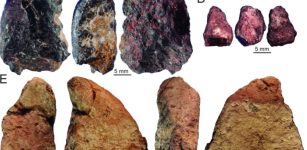 Homo Sapiens In China And What Happened When They Encountered Denisovans Or Neanderthals
Archaeology | Mar 4, 2022
Homo Sapiens In China And What Happened When They Encountered Denisovans Or Neanderthals
Archaeology | Mar 4, 2022 -
 Oklahoma’s Mysterious Hollow Hill – The Unexpected – Part 2
Featured Stories | Jul 9, 2020
Oklahoma’s Mysterious Hollow Hill – The Unexpected – Part 2
Featured Stories | Jul 9, 2020 -
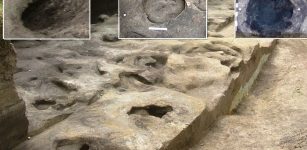 Sensational Discovery: 300,000-Year-Old Snapshot – Oldest Human Footprints From Germany Found
Fossils | May 12, 2023
Sensational Discovery: 300,000-Year-Old Snapshot – Oldest Human Footprints From Germany Found
Fossils | May 12, 2023 -
 Rare Viking Ship Burial At Gamla Uppsala Reveals Its Secrets – What’s Inside?
Archaeology | Aug 8, 2020
Rare Viking Ship Burial At Gamla Uppsala Reveals Its Secrets – What’s Inside?
Archaeology | Aug 8, 2020 -
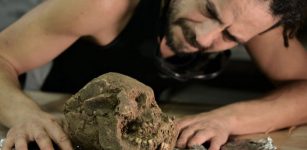 Lady SAS – Ancient Skeleton Of Foreign Woman Found In Palenque – Who Was She?
Archaeology | Apr 11, 2023
Lady SAS – Ancient Skeleton Of Foreign Woman Found In Palenque – Who Was She?
Archaeology | Apr 11, 2023 -
 Why Was Lovesickness A Feared Disease During The Middle Ages?
Ancient History Facts | Feb 8, 2018
Why Was Lovesickness A Feared Disease During The Middle Ages?
Ancient History Facts | Feb 8, 2018 -
 Ancient Egyptian Tombs With Stunning Trove Of Artifacts And Human Remains Unearthed In Saqqara
Archaeology | Jan 17, 2024
Ancient Egyptian Tombs With Stunning Trove Of Artifacts And Human Remains Unearthed In Saqqara
Archaeology | Jan 17, 2024 -
 Massive Well-Preserved Second Temple-Era Aqueduct Unearthed In Jerusalem
Archaeology | Aug 29, 2023
Massive Well-Preserved Second Temple-Era Aqueduct Unearthed In Jerusalem
Archaeology | Aug 29, 2023 -
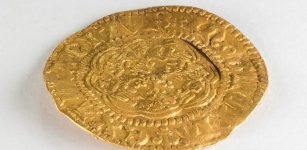 How Did Canada’s Oldest Coin Make Its Way To Newfoundland’s South Coast?
Archaeology | Nov 14, 2022
How Did Canada’s Oldest Coin Make Its Way To Newfoundland’s South Coast?
Archaeology | Nov 14, 2022 -
 Unique Study Of Skeletal Remains Reveals Grave Health Of Australian Pioneer Settlers
Archaeology | Apr 7, 2022
Unique Study Of Skeletal Remains Reveals Grave Health Of Australian Pioneer Settlers
Archaeology | Apr 7, 2022 -
 Ancient Mystery Of America’s Missing Metal – Can The Answer Be Found In Ancient Europe?
Civilizations | May 18, 2018
Ancient Mystery Of America’s Missing Metal – Can The Answer Be Found In Ancient Europe?
Civilizations | May 18, 2018 -
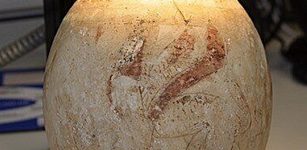 5,000-Year-Old Mystery: Decoration Of Eggs Predates Our Easter Tradition
Archaeology | Apr 9, 2020
5,000-Year-Old Mystery: Decoration Of Eggs Predates Our Easter Tradition
Archaeology | Apr 9, 2020 -
 On This Day In History: Tunguska Explosion: Mysterious And Ferocious Impact In Remote Siberia – On June 30, 1908
News | Jun 30, 2016
On This Day In History: Tunguska Explosion: Mysterious And Ferocious Impact In Remote Siberia – On June 30, 1908
News | Jun 30, 2016 -
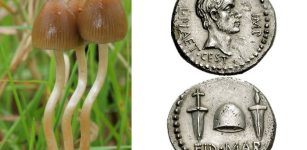 Strange Tale How The Liberty Cap Mushroom Got Its Name Starts In Ancient Rome
Featured Stories | Sep 3, 2023
Strange Tale How The Liberty Cap Mushroom Got Its Name Starts In Ancient Rome
Featured Stories | Sep 3, 2023 -
 Incredible Technology In Mysterious Huashan Caves, China
Civilizations | Feb 10, 2015
Incredible Technology In Mysterious Huashan Caves, China
Civilizations | Feb 10, 2015 -
 Cyrus The Great: Founder Of Achaemenid Empire Who Conquered Medians, Lydians And Babylonians
Featured Stories | Mar 21, 2019
Cyrus The Great: Founder Of Achaemenid Empire Who Conquered Medians, Lydians And Babylonians
Featured Stories | Mar 21, 2019


